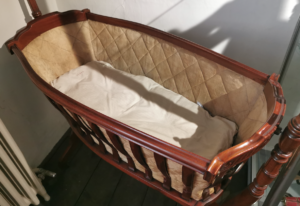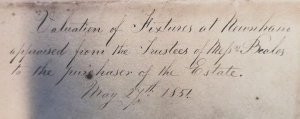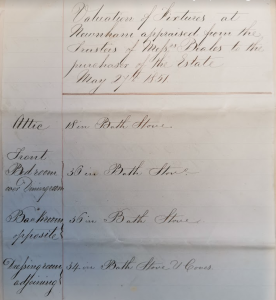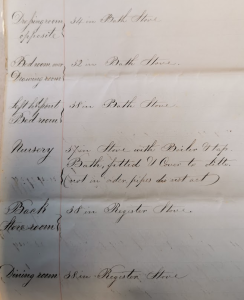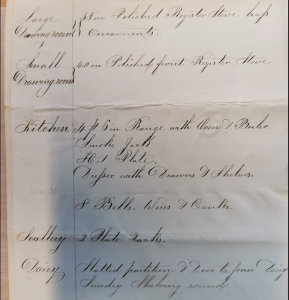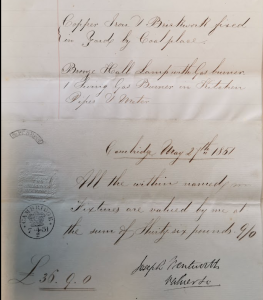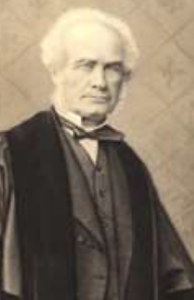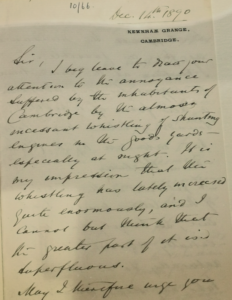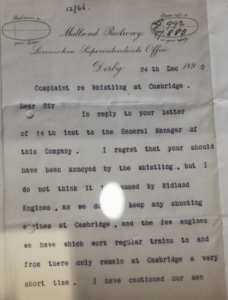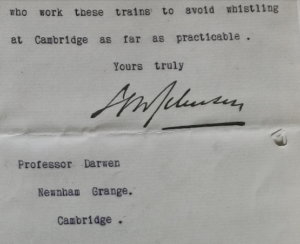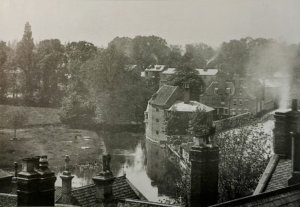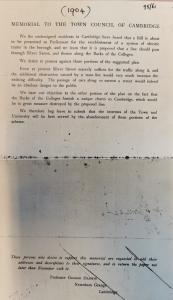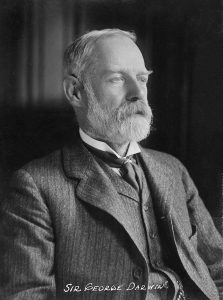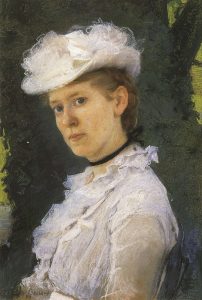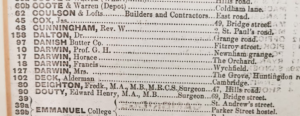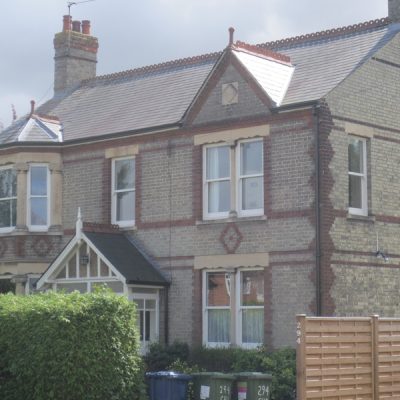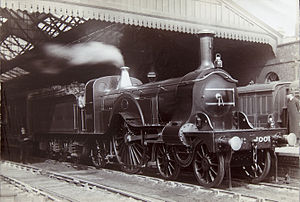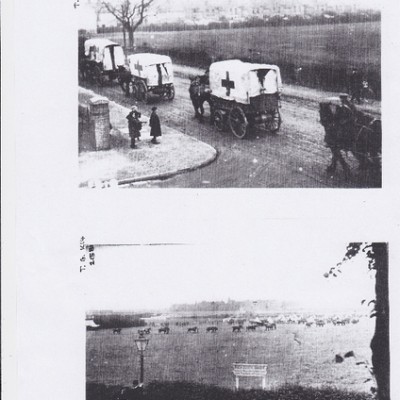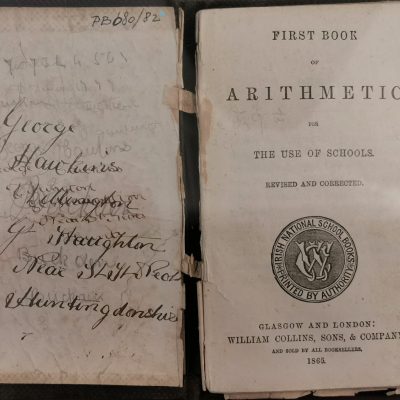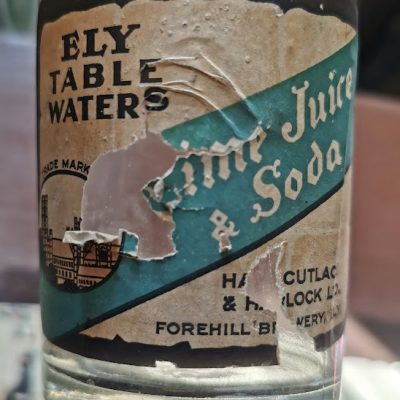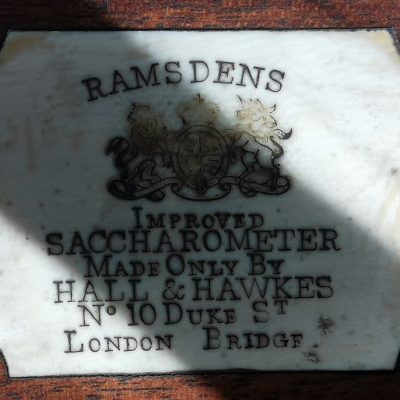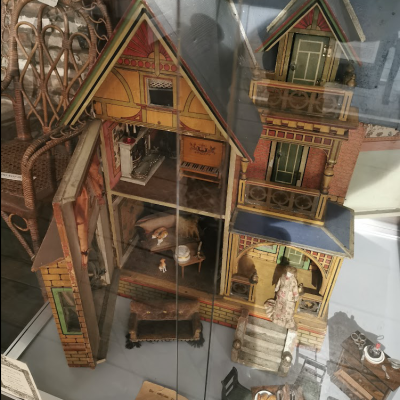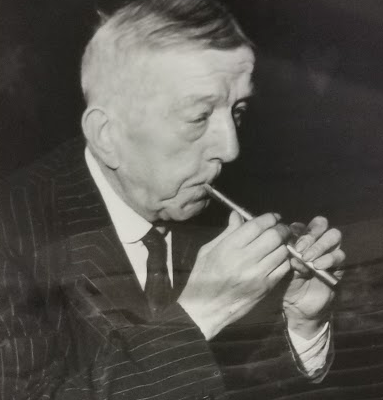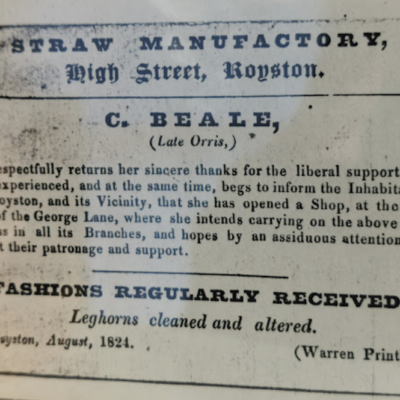Search by topic
- archaeology
- Building of Local Interest
- charity
- church
- crime
- dressmaker
- fire
- Great Eastern Railway
- Listed building
- Mapping Relief
- medieval
- oral history
- poverty
- Public House
- Rattee & Kett
- Religious House
- Roman
- scholar
- school
- Then and Now
- tudor
- women
- work
- world war one
- world war two
Search by text
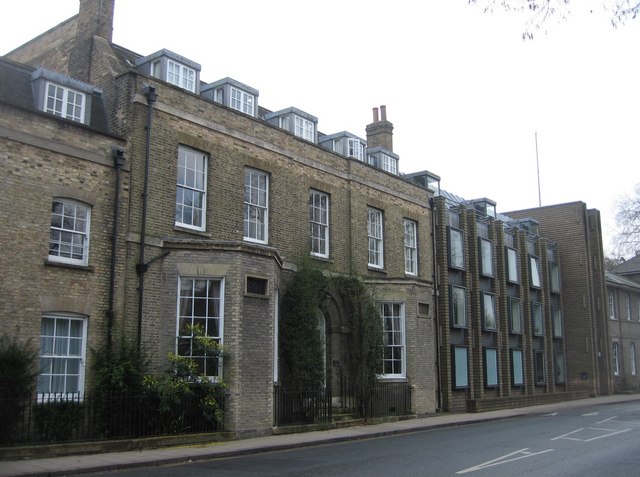 By Sebastian Ballard, CC BY-SA 2.0, https://commons.wikimedia.org/w/index.php?curid=13843819
By Sebastian Ballard, CC BY-SA 2.0, https://commons.wikimedia.org/w/index.php?curid=13843819Newnham Grange (Causey/Causeway House), Darwin College, Silver Street, no. 3 Newnham
History of Newnham Grange
1672 Corporation of Cambridge granted to Richard Dickinson a 21 year lease ‘of the Armitage and void ground beyond the holt towards Newnham Mill.’ Loggan’s 1688 map shows a house standing approximately on the site of the north-eastern half of Newnham Grange. This must be the house built by Richard Dickinson when he was granted the lease of the Armitage. For obvious reasons it was called Causeway, or Causey, House.
In 1779 the house was listed in the parochial rate-books for the last time.
Royal Commission Survey of Cambridge 1959: the house was built early in the 19th century, before 1830, for the Beales family, corn and coal merchants, and included a large irregular-shaped yard to the E largely surrounded by stables, offices, coal-stores and granaries. the property was bought by the Darwins in the last quarter of the 19th century… Newnham Grange is an early 19th century house of gracious aspect containing fittings of the period.
In 1976 Margaret E Keynes published ‘A House by the River – Newnham Grange to Darwin College’, an extensive history of the buildings and people who lived at this location.
For a history of Newnham Grange follow this link:
https://en.wikipedia.org/wiki/Newnham_Grange
Another interesting web site that gives an overview of the area in particular with reference to Gwen Raverat’s Period Piece is:
https://zanditon.com/atlasraverat/newnham.htm
Mahogany cot used by Darwin family at Newnham Grange, now in the Museum of Cambridge:
1747 Simeon Lord lived here, a china merchant with a shop near Great St Mary’s and the Merchant’s Yard at Small Bridges.
1785 Corporation of Cambridge leased the Armitage site to Patrick Beales for a term of 40 years.
1790 Patrick Beales surrendered his lease and took two new leases. For these he paid annual ground rents of 20 and 10 shillings and two ‘fines’ of £300 and £220; thus he became tenant for 999 years of ‘the parcel of ground called the Armitage’ and ‘of a certain Piece of waste Ground at Newnham in the Parish of St Botolph.’
1792 Patrick Beales died aged 42 and his younger brother, Samual Pickering Beales, took over running the family business.
1793 house built for the family of Patrick Beales, a local corn and coal merchants, brewers, and twice Mayor of Cambridge.
1795 Henry Gunning in his Reminiscences of Cambridge recalls a very high flood in February 1795. ‘There was a ball given by the freemasons on that evening, and a carriage was waiting to take Mrs Beales and her party to it. The coachman (in order to spare his own life and that of his horses) was obliged to drive away, leaving the company behind. Monsieur Corneille, a celebrated hairdresser, whose presence was anxiously awaited by several parties in the town, could not leave Mr Beales’s house, but was obliged to take up his residence there for the night.’ (Quoted in Period Piece p.43)
1824 the Armitage and the Waste Ground were mortgaged by S P Beales to raise £7,000, either to defray legal costs or because the the business was not prospering.
1836 S P Beales died and the business was continued by his sons Charles and Patrick. C & P Beales supplied 9 barrels of beer to the Coronation Feast in 1836.
1842 partnership dissolved and Patrick continued in sole charge.
1851 Patrick Beales was in debt and had to sell the property from Newnham Grange up to Newnham Mill in 15 plots. The Armitage and the Waste Land was mortgaged to ‘Swann Hurrell of Cambridge, Iron monger’, for £1,000. Swan Hurrell was Patrick Beales’s brother-in-law. Swan Hurrell was the nephew of Charles Finch.
St John’s College possess a copy of the advertisement of the sale and accompanying plan. It took place in the Bull Hotel at 7pm Wednesday 26 March.
Lot 1 comprises a most excellent brick-built family residence, opposite Queen’s Green, now in the occupation of Patrick Beales, Esq, allowed to be one of the best built houses in the town, comprising on the basement, noble entrance hall, capital dining room, two drawing rooms, and breakfast room. On the first floor are four principal bed rooms, with the dressing rooms attached, and three other bed rooms, and numerous servants rooms over. the domestic offices, comprise two kitchens, larder, scullery, and extensive cellarage. Together with a range of stables and granaries on the left-hand side of the house, yard behind, and an opening leading to the river. Also the mill house (as shewn on the plan). green-house, shrubberies, lawn, and ornamental garden, extending to the beautiful meandering stream forming a branch of the River Cam, across which are two islands, presenting altogether a most delightful residence, suitable for a genteel family. The extreme frontage of this lot is nearly 200 feet. The whole of the above is freehold except the two islands, which are leasehold from the Corporation of Cambridge for 40 years, from Michaelmas 1839, at a ground rent of five guineas.
The remaining 14 lots are also describedLots 2, 3 and 4 were to become the site of the Hermitage. Lot number 15 was to become the site of the Granta Brewery and Hotel in the 1880s.
1851 Newnham
Patrick Beales, merchant
Katharine Beales, 35, wife, b Foxton
Mary
Edward
Jane
Catherine
Frederic
Margaret
Emily
Susan Barber, 30, servant, b Cambridge
Susan Petchey, 22, servant, b Fulbourn
Sarah Sube, 25, servant, b Cambridge
Ann Toats, 43, servant, b Cambridge
1861 no. 3 Newnham
Patrick Beales, widower, 64, merchant maltster corn coal, b Cambridge
Patrick, 26, merchant, b Cambridge
Mary, 24, b Cambridge
Edward, 20, ironmonger, b Cambridge
Katherine, 19, b Cambridge
Margret, 13, b Cambridge
Emily, 10, b Cambridge
Cecilia, 8, b Cambridge
Ellen Rowlinson, 31, b Suffolk
Margaret Moore, 27, b Bourn
Emma Osborne, 15, b Cambridge
1869
In June 1869 Josiah Chater entered in his diary: Heard that Pat Beales had absconded having overdrawn his account £6 or £7,000 at the bankers, he being Borough Treasurer.
Pat was the eldest son of Patrick Beales who had been appointed Borough Treasurer in 1857 when his father was acting deputy Mayor and his uncle Swann Hurrell was Mayor. The accounts that Pat Beales left behind are so confused it is impossible to know whether it was incompetence or deliberate falsification. Nothing seems to have been done to bring him to justice and he no longer appeared as occupant of 3 Newnham Terrace. In 1870 his father’s will states that provisions has been made for his son Patrick.
1871 no. 3 Newnham
Patrick Beales, corn and coal merchant
Mary E
Katherine
Cecilia
Frederick, 27, merchant, b Cambridge
Emily Drine, cook, 23, b Cambridge
Susan Riches, housemaid, 25, b Ely
After 1873 the Beales daughters lived on in the house for a few years. Three married clergymen; the others remained single. Emily left Cambridge to keep house for her uncle Swann Hurrell when he moved to St Leonard’s in 1891.
1878
The remaining sisters moved into 12 Newnham Terrace. The house was let to Dr Bumpsted, a surgeon.
It was then let to Arthur Gray, later Master of Jesus College.
1881 Patrick Beales died in 1873 and by 1881 none of the family are recorded as living at this address. He was mayor of Cambridge 1856-7. He then went bankrupt at some point and was bailed out by his brother-in -law Swann Hurrell (mayor 1857-8) who took over the business.
1884 Edward Beales who was running the family coal business was unable to meet his debts. All his assets were handed over to his creditors and the house in Thompson’s lane was sold. Alexander Macintosh bought the entire ironmongery business. the foundry was renamed Cam Foundry and the shop at 14 Market Hill became the well-known premises of Alexander Macintosh and Sons. The coal business continued under the name of P Beales and Co even though Edward left Cambridge. Miss M E Beales took over and by 1909 the firm was thriving again. The family house was in the hands of Edward Beales Trustees. Arthur Gray’s lease came to and end in March 1885. George Darwin must have known that this was gong to happen and in September 1884 had written to John Eaden, Edward Beales’s about renting the house.
1885 The house was bought by George Darwin £4,600. It had previously been owned by the Beales, corn and coal merchants. The house at this time had no name so George Darwin named it Newnham Grange. (Period Piece p.32)
Darwin employed the London architect, J J Stevenson, to make changes to the house. He was a distinguished architect having built churches, country houses, offices and town houses in many places. Work at Oxford and Cambridge Universities was still to come. he had completed his plans by the end of the year and 13 Feb 1886 Mrs Darwin wrote to her family in the USA: The improvements are chiefly to be made in the kitchen apartment. This is what every English house has in that quarter. Hall or some small room for servants’ sitting room. Butler’s pantry, Kitchen, with range, no sink, Scullery and smaller kitchen which has range. A larder, a cupboard or big store-cupboard. The cost of the kitchen was estimated at £690 and of the entire building works, £1050. The builder was to be William Saint. To assist with the choice of wallpaper and paint they asked Frederick William Leach.
After moving in there was a telephone installed. George Darwin was given the number 10 for Newnham Grange. His brothers, Horace and Frank, on Huntingdon Road were given the numbers 17 and 18. In November 1885 the telephone was such a novelty that the Darwins used it at a dinner party to amuse their guests among who was Charles Villiers Stanford, the composer.
Gwendolen Mary Darwin was born 26 Aug 1885.
1887
Mrs Darwin first used her cowshed for growing mushrooms. In 1888 this was converted into a potting and toolshed and the former toolhouse by the river door was then used for growing mushrooms. It was called the Mushroom House for years.
Charles Galton Darwin was born 19/12/1887.
1890
22/3/1890 Margaret Elizabeth Darwin born.
1891
Matilda Renfry, caretaker, widow, 49, medical rubber[?], b London
(At the time of the census the Darwin family were visiting Down House, former home of Charles Darwin, father of George)
1894
William Darwin born in 22/8/1894.
1895
The first year of the public electricity supply in Cambridge. Newnham Grange was wired and electricity took the place of gas in lighting the house.
The Counting House and part of the remaining granary were converted into a living-house named the Granary.
1901
Emma R Gage, 28, housemaid, b Suffolk
Selina Pearson, 20, kitchenmaid, b Northants
(At the time of the census the Darwin family were staying at Nelindre, Apsley Heath, Bedfordshire) With the family in Bedfordshire was Helen Jean Campbell (b 1860 Berks) the family nanny (Period Piece p.62)
The Miss Mary E Green whose drawing classes are described in Period Piece p.63 is the artist who lived came from Harston. For more about Mary and the Darwin family see:
1904
1911
George Howard Darwin, 65, professor of Astronomy University of Cambridge, b Kent
Maud, 49, b USAGwendolen Mary, 25, b Cambridge
Margaret Elizabeth, 21, b Cambridge (married Geoffrey Keynes)
Jacques Pierre Raverat, 26, visitor, art student, b France
Louisa Philips, servant, 38, cook, b Warwicks [Mrs Philips is described in period Piece p.50. She worked for the family for nearly 30 years]
Emma Banham, servant, 32, parlourmaid, b Wisbech
Alice Collman, servant, 29, housemaid, b Durham
Mary Ann Laws, servant, 16, underhouse maid, b Norfolk
Ethel Phillips, servant, 16, kitchen maid, b Warwicks
1914 – 1918
M E Keynes includes a whole chapter in A House By The River about Cambridge and World War I (p181f).
Ambulances were then motorized; they constantly passed Newnham Grange on their way by the backs to the First Eastern General Hospital. I remember sitting in the school-room listening in misery to the sound of the ambulances passing the house. When they succeeded each other at frequent intervals for some time I knew that there must have been heavy fighting in Flanders or France.
Our first encounter with Belgian refugees led to a most extraordinary coincidence. Soon after the fall of Antwerp the Belgian Refugee Committee in Cambridge were told to expect a large number of refugees. This must have been in October 1914. My mother offered to help the Committee by providing luncheon for a dozen refugees on their reaching Cambridge. … I began by asking them where they came from; ‘Antwerp’ was their reply. I then told them that, though I had never been there myself, I had an old Uncle who used to enjoy going to Antwerp to attend board meetings of the Antwerp Water Works, the company being British and he one of the directors. ‘What was his name>’ they asked. ‘Mr William Darwin’, I replied. ‘He was a rather small old man with white hair an a rosy face and walked with a stick.’ At this the men exclaimed that they were all employees of the Antwerp water Works and had known him well.
My mother made a home at Newnham Grange for a Belgian widow and her small boy. Madame de Schietere de Lophem had escaped from Brussels in a farm wagon with her five year old son, Fernand-Ulric, concealed among bundles of hay. … They only stayed with us for two or three months, as my mother became increasingly annoyed by Madame de Lophem’s refusal to do any form of war-work, preferring to stay comfortably waited upon at home to making the slightest effort.
In the winter of 1915 my mother undertook to make a home for the two youngest daughters of my cousin Josiah Wedgwood during his absence abroad serving in the Gallipoli campaign. Josiah was a Lieutenant-Commander with the R.N.V.R. and was a friend of Winston Churchill. He was severely wounded at Gallipoli on 6th May. Churchill had this news telegraphed at once to Helen Wedgwood (a second year student at Newnham College). Some days later she visited Newnham Grange with a note sent by Churchill that enclosed a copy of a long letter her father had sent her at the end of April.
M E Keynes had been working at the Juvenile Employment Exchange but in 1915 left to take up her chosen work of massage. The artist Mary Greene of Harston, whose drawing classes we had attended as children with such profit and enjoyment (see Period Piece) had a much younger sister, Helen, who was well-known in Cambridge both for her Swedish gymnastic classes and for her excellent massage.
In 1916 M E Keynes was offered a post in London working for the Admiralty. Her work was to break the German military codes by cracking the hat ciphers that were used. Initially she worked in a nondescript ‘secret’ address near the Admiralty, but in early 1917 the unit moved to premises on top of the Admiralty.
In 1917 12th May Margaret Elizabeth Darwin married Geoffrey Keynes at St Botolph’s.
Three month’s later, Margaret’s mother, Maud, was recovering at Newnham Grange after an operation. She had been working filling shells in the laboratory of Bertram Hopkinson, professor of Engineering, but she had been forced to stop work because of a duodenal ulcer.
In 1918 the cook at Newnham Grange was still Mrs Phillips who had been there since about 1904. She died at Newnham Grange in 1935 and was buried in Trumpington. The inscription is ‘Louisa Phillips, 1872 – 1935. A valued Friend in the Family of Lady Darwin for nearly Thirty Years.’
Her cooking was so good that the gourmet professor A E Housman, poet of the Shropshire Lad, would always accept invitations to dinner.
Maud Darwin was made one of the Governors of the Management Committee of the Cambridge School of Arts and Crafts.
1939
Maud Darwin, widow
Elsie Hitchings, b 1902, cook
?
Nesta Parker, b 1906, parlourmaid
?
Gwendolen Darwin, later Gwen Raverat, recalls in her account of life in Cambridge, Period Piece (pub. 1952), how from a window at the front of Newnham Grange she could see where ‘there were railings along the road leading to the bridge, lovely Georgian railings, now improved away; and often people were glad to dodge behind them to escape from the terrified and terrifying herds of cattle, which were driven with bangs and shouts, through the streets to the Monday cattle market.’ (p.44)
From the bay window at the back of the Grange, Gwen could enjoy the more peaceful scene of a milking herd: she ‘ could look up the river, under the arching trees, and see far off the cows crossing the ford below the Newnham Millpool, as they went to and from their sheds to be milked, four times a day; a very pretty sight.’ (p.36)
Gwen also recalls the milk cart – ‘the yellow milk carts, like Roman chariots, with their big brass-bound churns of milk and their little dippers hooked on the side.’ (p.45)
Contribute
Do you have any information about the people or places in this article? If so, then please let us know using the Contact page or by emailing capturingcambridge@
License
This work is licensed under CC BY-NC-SA 4.0





